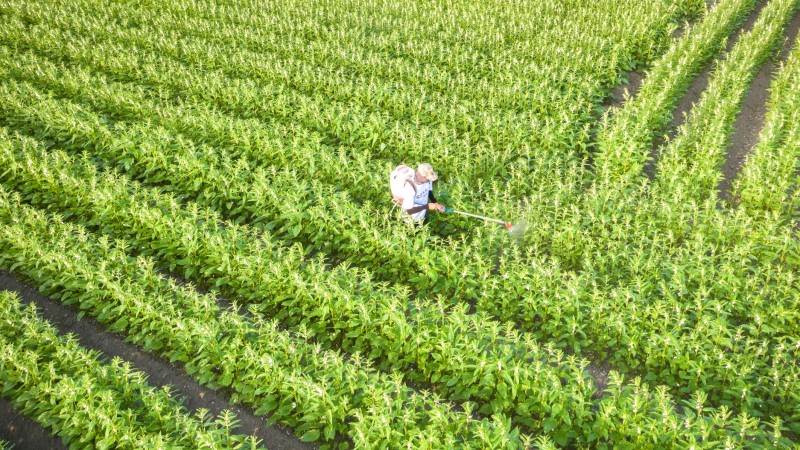Sesame seeds: China's imports exceed 1 million mt
September 18, 2025 at 4:32 PM ,
Der AUDITOR

Brazil expects 350,000 mt of sesame seeds
The World Sesame & Peanut Conference 2025 (WSPC 2025) took place in Istanbul from 5 to 7 September, organised by sesameinfo.in. Market experts exchanged views on supply and demand in the international sesame seed market, among other things, and important trends were also discussed. On the one hand, sesame seeds are increasingly being hulled in Pakistan and Nigeria, and on the other hand, market dynamics could change if Brazil develops into a long-term trading partner for China.
Global sesame seed production continues to grow every year, mainly due to increased cultivation in Brazil, Pakistan and Tanzania. This in turn has led to a decline in prices on the international market by USD 1,000-1,200/mt.
Brazil is expected to achieve a sesame seed crop of 350,000 mt this year. Before the floods, production in Pakistan was expected to reach 300,000 mt, but this now needs to be re-evaluated. Tanzania has recorded a production of around 250,000 mt, while production in Mozambique is estimated at around 120,000 mt. In West Africa, growing conditions for the plants have been good so far. Production in Nigeria and Burkina Faso is expected to be similar to last year, at around 360,000 mt and 210,000 mt respectively.
In India, a smaller winter crop is expected due to reduced acreage and rainfall. It is still too early for accurate estimates, but in the past, the winter crop has ranged between 100,000 and 150,000 mt. Meanwhile, the summer crop in India could grow significantly in the coming years as cultivation expands to other states such as Uttar Pradesh and Madhya Pradesh. To meet demand, India will import around 100,000-125,000 mt of sesame seeds this year.
High demand in China
China has an estimated sesame seed demand of 1.5 million mt per year. Domestic production amounts to only 320,000 mt, meaning that the majority must be met through imports. In 2024, imports amounted to 1.13 million mt. African origins have a clear advantage here thanks to zero tariffs. In the summer of 2025, the first shipments from Brazil were received. If the quality and price of the goods are convincing, the South American country would be another alternative.
To meet domestic demand, Japan imports 180,000-190,000 mt of sesame seeds annually, with countries such as Nigeria, Tanzania, Mozambique and Burkina Faso also among the leading suppliers.
Eastern Europe is developing into a new sales market with a current volume of around 70,000 mt and an annual growth rate of 6%. Turkey is expected to import around 225,000 mt of sesame seeds. While domestic consumption is declining, Turkey is strengthening its role as a trading hub for Europe. Demand of around 70,000 mt is expected in Egypt.
US tariffs could shift demand
The US and Canada are expected to import a combined total of 35,000 to 40,000 mt, mainly hulled sesame seeds, while US production is around 10,000 mt. The US purchases most of its sesame seeds from India, but this trade relationship could be dampened by the 50% import duty. Although the situation could improve again in the long term, for the time being it can be assumed that the US will import more hulled sesame seeds from Nigeria and Pakistan. Despite all this, India's exports are not likely to decline, as buyers in Europe and other countries are likely to purchase these quantities instead.
Slump in the Indian market
After suppliers from Pakistan secured the bulk of the last sesame seed tender, prices in the Indian sesame seed market are coming under pressure despite the uncertain crop outlook. Export prices remain stable for the time being and, as in previous weeks, stand at USD 1,635/mt FOB India.
South Korea imported a total of 42,338 mt of sesame between January and July 2025. At just under 20,000 mt, almost half of the shipments came from China, followed by India (7,871 mt), Nigeria (5,376 mt) and Burkina Faso (4,400 mt). During the WSPC 2025, it emerged that the import potential for the current calendar year could be as high as 100,000 mt.
|
Sesame seeds, India, in USD/mt |
||
|
Type |
FOB India |
CIF Hamburg |
|
Natural, 99.95% |
1,320 |
1,415 |
|
Hulled, 99.90% |
1,500 |
1,595 |
|
Hulled, 99.98% |
1,635 |
1,730 |
|
Jet black, 99.50% |
2,775 |
2,870 |
|
Trade sources |
||
View more
- price chart, sesame seeds, hulled, mechanically dried, 99.95%, India
- price chart, sesame seeds, unhulled, 99.95%, India
- more price charts





